The Riotoro Onyx Power Supply Review: 650W & 750W Tested
by E. Fylladitakis on March 23, 2017 10:00 AM EST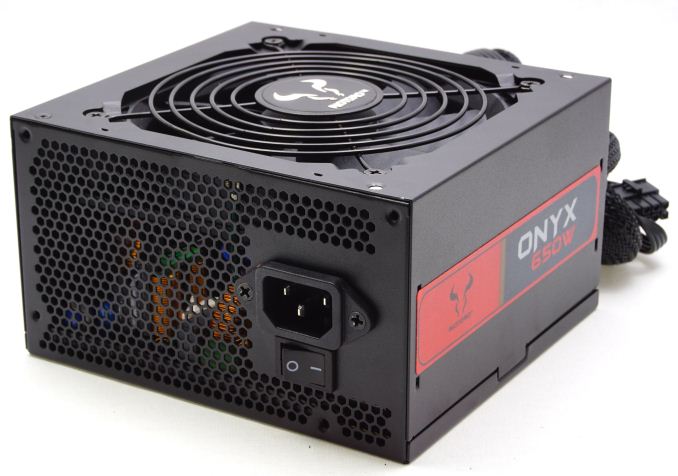
Riotoro is a new player in the PC market, coming into business into 2015. The company was founded by ex-Corsair and ex-NVIDIA employees who possess the experience that is necessary for them to compete in today’s cutthroat markets. They are making slow, cautious moves towards new product releases, trying to maximize their revenue and, as a result, their growth. Their first entrance into the North American market was with the Prism CR1280, an RGB full tower case that we reviewed last April.
In this review we are having a look at Riotoro’s very first PSUs, the Onyx 650W and the Onyx 750W, which are used as proof of the company’s experience and cautiousness. These two PSUs are released in tandem with the 80Plus Gold certified Enigma 750W PSU.
Instead of releasing a high output PSU that would be impressive but targeted at a very small fragment of the market, the two newly released Onyx units are more mainstream and are aiming to be financially competitive - not to take the market with brute force as with other brands. They are 80Plus Bronze certified and targeted towards casual gamers and/or advanced users, where the bulk of today’s home PC revenue comes from. For the time being there are only two versions of the Onyx, with a maximum output of 650W and 750W respectively.
Riotoro Onyx 650W Specifications
| Riotoro Onyx 650W Power specifications ( Rated @ 50 °C ) |
|||||
| AC INPUT | 100 - 240 VAC, 50 - 60 Hz | ||||
| RAIL | +3.3V | +5V | +12V | +5Vsb | -12V |
| MAX OUTPUT | 25A | 25A | 54A | 3A | 0.8A |
| 130W | 650W | 15W | 9.6W | ||
| TOTAL | 650W | ||||
Riotoro Onyx 750W Specifications
| Riotoro Onyx 750W Power specifications ( Rated @ 50 °C ) |
|||||
| AC INPUT | 100 - 240 VAC, 50 - 60 Hz | ||||
| RAIL | +3.3V | +5V | +12V | +5Vsb | -12V |
| MAX OUTPUT | 25A | 25A | 62.5A | 3A | 0.8A |
| 130W | 750W | 15W | 9.6W | ||
| TOTAL | 750W | ||||
Packaging and Bundle
We received the two Onyx PSUs into simple, effective cardboard boxes. The artwork on the boxes is simplistic, but all of the necessary information and specifications are printed onto the sides and rear of the box. Inside the box we found the PSUs simply wrapped in nylon bubble bags, without any polyethylene foam or extra cardboard packaging. While not the best shipping protection for a PSU, but it should be sufficient for the vast majority of cases.
The items bundled with the Onyx PSUs are the absolute minimum that we expect: inside the box we only found the necessary AC power cable, a few cable straps, four black mounting screws and a basic user’s manual. Both units share the exact same bundle, only the manual itself and the number of supplied modular cables differ.
| Connector | Onyx 650W | Onyx 750W |
| ATX 24 Pin | 1 | 1 |
| EPS 4+4 Pin | 1 | 1 |
| EPS 8 Pin | - | - |
| PCI-E 6+2 Pin | 2 | 4 |
| PCI-E 8 Pin | - | - |
| SATA | 6 | 9 |
| Molex | 3 | 6 |
| Floppy | 1 | 1 |
The Riotoro Onyx PSUs are semi-modular, with the ATX and EPS cables hardwired onto the units, with the rest of the connectors on removable cables. All of the wires and connectors, including those of the hardwired cables, are black. The ATX cable is wrapped into black nylon sleeving, while the rest of the cables are “flat” ribbon-like cables. The 750W version has two extra PCI Express connectors, plus extra SATA and Molex connectors. Technically, the power rating difference does not really justify such a vast difference on the number of connectors, suggesting that Riotoro simply wanted to differentiate the target group of their two models.


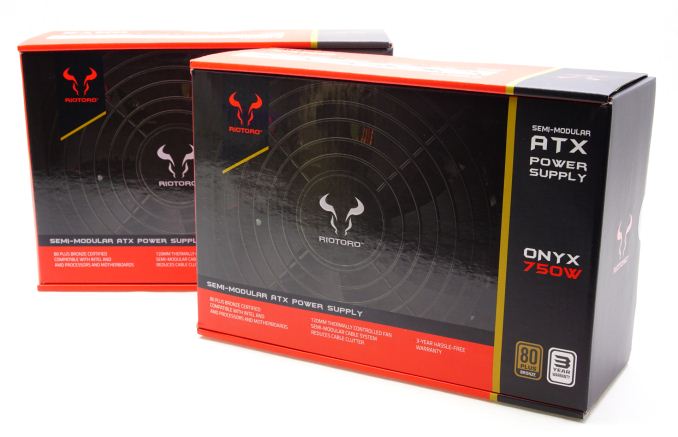
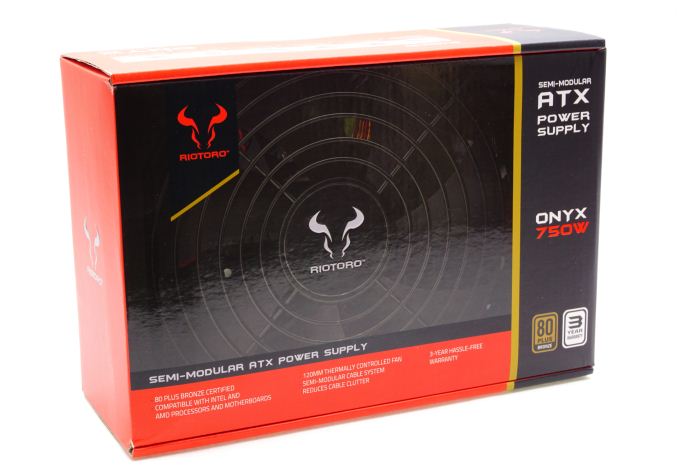
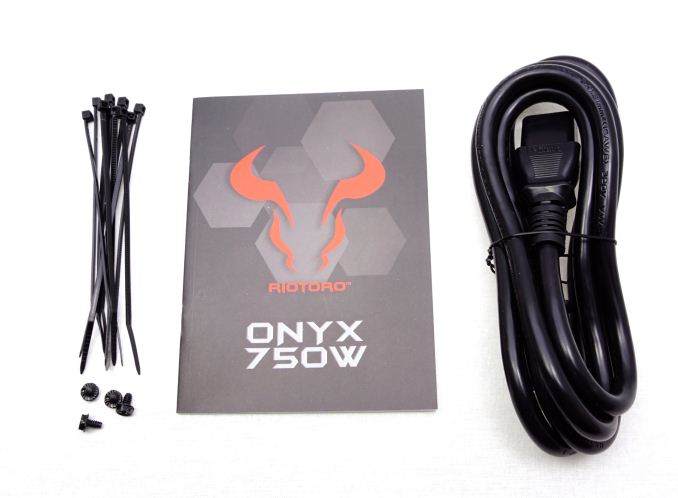
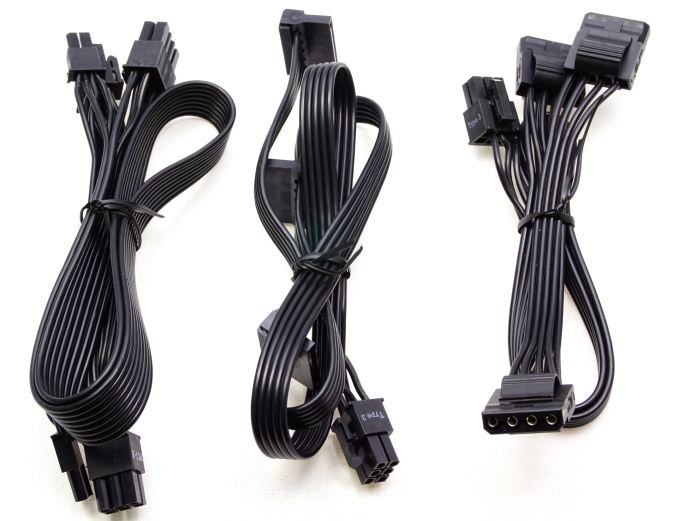








32 Comments
View All Comments
DanNeely - Thursday, March 23, 2017 - link
I thought bitcoin was a bit earlier, must've just been distributed computing projects that did them in. I jumped directly from my GT6800 to GTX260; at which point there were already a decent number of compute projects available to choose from (I'd been running CPU apps via BOINC for several years at that point).kn00tcn - Wednesday, March 29, 2017 - link
xfx may have been the second 'lifetime' or 'double lifetime' brand, though i'm not sure if that was before the amd switch in 2008/2009eriri-el - Friday, March 24, 2017 - link
Don't forget luck playing its usual tricks on us humans. Don't point all ur fingers at the manufaturer/brand alone. My Corsair HX520W is now entering its 10th year of service on my main and only PC. I have been changing and upgrading parts here and there, but I have never seen the need for more power, so I never change it just to see how far it would take me. Maybe one day I'll get something new for more efficiency, but right now I'm just happy it still runs.Sivar - Saturday, March 25, 2017 - link
SeaSonic probably made your Corsair, too.nagi603 - Sunday, March 26, 2017 - link
The first gen Seasonic X series were great, I still have an X400. The latter though... About 1.5 years ago I had a X420 that blew first time I turned it on, and a replacement X400 that refused to turn on about a year later, in a file server that was on maybe 1% of the time. I can only hope the X650 I got instead will last longer.kn00tcn - Wednesday, March 29, 2017 - link
bfg was a dominant nvidia partner like evga is now, to call it some random new company is a complete insult & total ignoranceto not know that many corsair psus are/were built by seasonic is also ignorance
DanNeely - Thursday, March 23, 2017 - link
"The 750W version has two extra PCI Express connectors, plus extra SATA and Molex connectors. Technically, the power rating difference does not really justify such a vast difference on the number of connectors, suggesting that Riotoro simply wanted to differentiate the target group of their two models."The Molex/Sata connectors are almost certainly about differentiation. At potentially 150W per connector 4 6+2 GPU connectors are pushing the limit of what a 650W unit can provide so only putting 2 of them on the smaller one isn't unreasonable. OTOH if they wanted they could've added a single 8 pin GPU connector or 2x 6 pins within the output headroom.
Shadowmaster625 - Thursday, March 23, 2017 - link
Is it that difficult to make a power supply that doesnt give away 10 watts when your machine is idling at 42W?bill.rookard - Thursday, March 23, 2017 - link
It's the span of the wattage that makes it difficult. Not only does the circuitry have to handle generating 50w, it also has to put out 500+ with the exact same design. I'm sure they could design a dual-mode power supply, which has two stages (similar to Arm's BIG.little core designs), but then that's extra components and extra cost, and ultimately for what?Saving 8w of power?
8w of power @ 24/7 is hardly one kw/hr - so it would save you 10c per week, but cost you an extra 50$ for the PSU. That means you'd recoup the savings in 10 years. :)
DanNeely - Thursday, March 23, 2017 - link
The short version is yes. The hardest part of the latest 80+ standard (the first to set a 10% target in addition to the 20-100% ones) is getting the losses from all the fixed power components down, not getting an extra percent or two of efficiency at full load.Broadly speaking your power losses are made up of the sum of a fixed value that's constant when the PSU is turned on and one that grows linearly with power used. Turning the fan on/up and extra losses from hotter parts are why it begins to dip down again at max load.